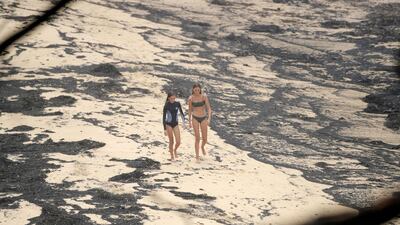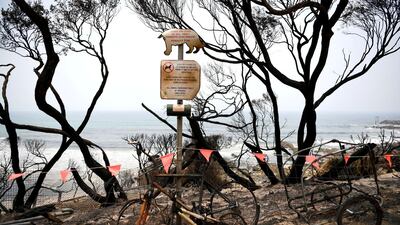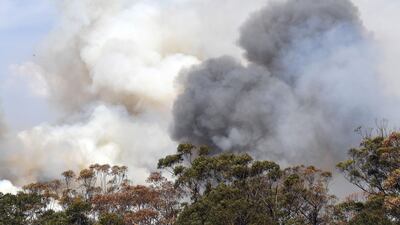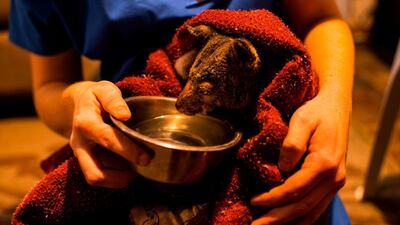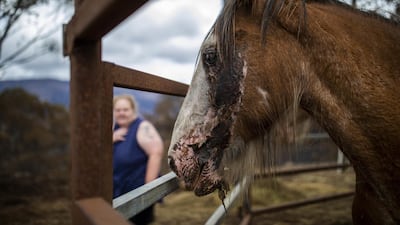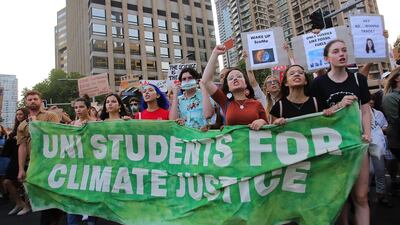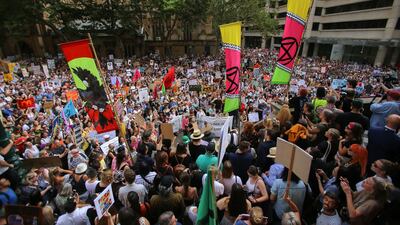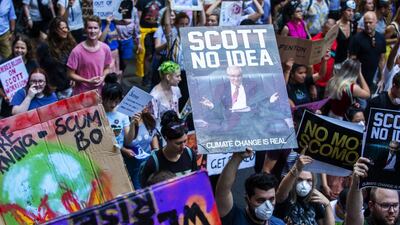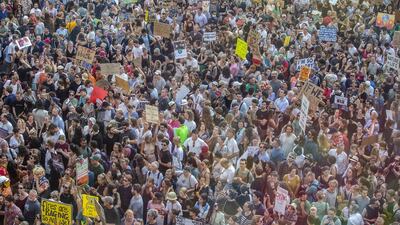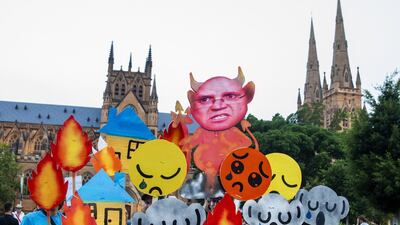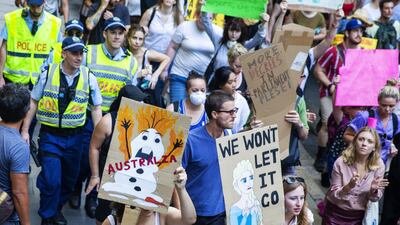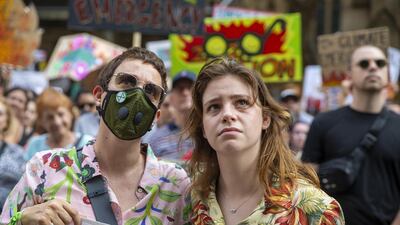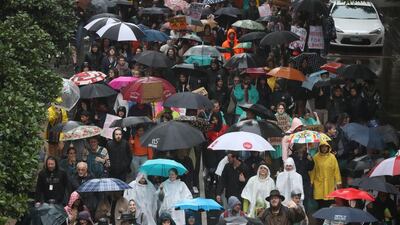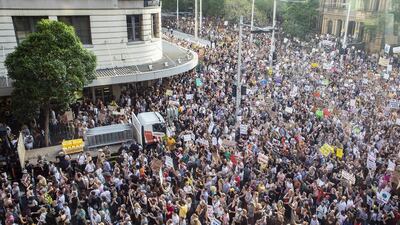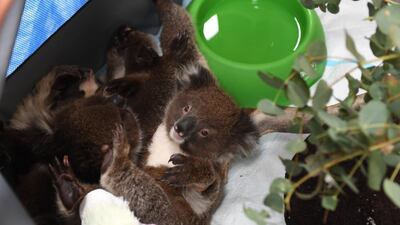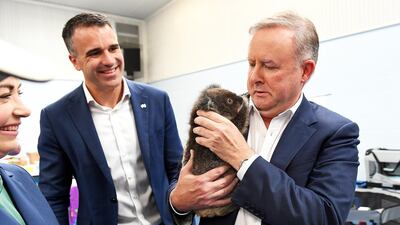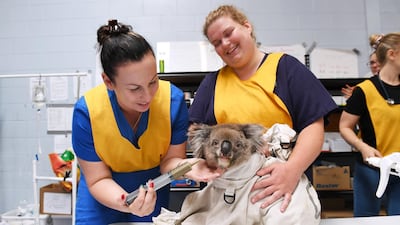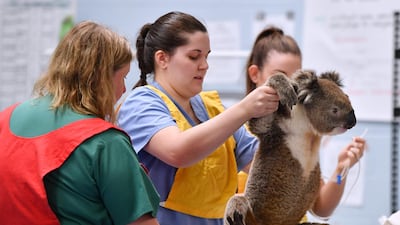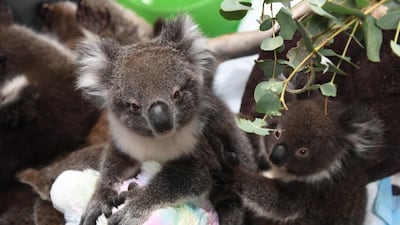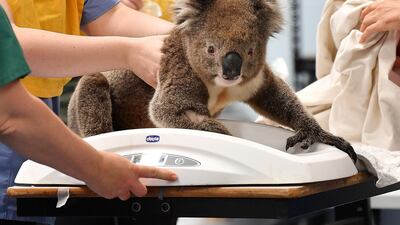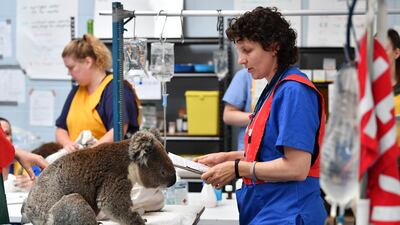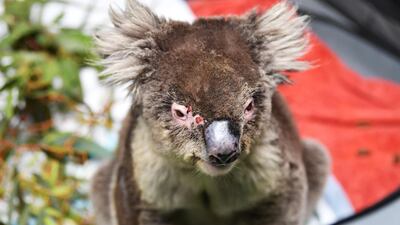Gale-force winds merged two enormous bushfires in south-east Australia into a 'mega blaze' on Friday as thousands of people abandoned their homes for evacuation centres and military helicopters dropped emergency supplies to towns at risk of being cut off.
The danger is centred on New South Wales and neighbouring Victoria, Australia’s most populous states, where temperatures and wind speeds rose after a few days of relatively benign conditions.
"The conditions are difficult today," said Shane Fitzsimmons, rural fire service commissioner for New South Wales state. "It's the hot, dry winds that will prove once again to be the real challenge."
Temperatures soared above 40°C in parts of New South Wales and Victoria, where attention was focused on the two fires that linked to form yet another monster blaze.
The New South Wales Rural Fire Service has warned that coastal towns south of Sydney including Eden, Batemans Bay and Nowra could again be under threat weeks after losing homes to the fires.
“We want people out into safer places,” Mr Fitzsimmons said.
New South Wales Premier Gladys Berejiklian said there were more than 130 fires burning in the state, with just over 50 not yet under control.
In Victoria, evacuation orders were issued in alpine areas. Victorian Premier Daniel Andrews pleaded with residents to leave danger areas when alerts were issued.
“If it is safe to get out, then you must get out. That is the only way to guarantee your safety,” he said.
A "state of disaster" was extended by 48 hours ahead of Friday's rising temperatures. The unprecedented fire crisis in south-east Australia has claimed at least 26 lives and destroyed more than 2,000 homes since September.
Prime Minister Scott Morrison said the Australian military was on standby to help firefighters and emergency agencies.
“I’ve given them very clear instructions that they are to stand ready to move and support immediately,” Mr Morrison said. “In the event that they are needed in the wake of what we hope we will not see today, but we must prepare for today.”
The military has already been involved by clearing roads closed by fallen trees, burying dead cattle and sheep and providing fodder to surviving livestock.
Separately, Mr Morrison thanked the UAE "for your condolences and offers of support" following a phone call With Sheikh Mohamed bin Zayed, Crown Prince of Abu Dhabi and Deputy Supreme Commander of the UAE Armed Forces, who offered expertise, equipment, manpower and other forms of support to help Australia.
In the small village of Towamba in southern New South Wales, most residents had left by Friday, after firefighters warned them that without a solid defence against the blazes, they should get out, said John Nightingale, a volunteer firefighter with the Rural Fire Service.
Last week, some houses in the village were destroyed by a fire that turned the afternoon sky first a deep magenta and then pitch black, Mr Nightingale said.
“Late at night, you could hear the rumbling of the fire,” he said. “It was very terrifying.”
A wind change from the south was predicted for Friday evening, which officials fear could blow the flames in a new direction. Mr Nightingale said he and the other firefighters would work to snuff out any spot fires that flare up to try to keep them from spreading. But if conditions became too dangerous, they would need to take shelter at a community hall, a solid structure with about 25,000 litres of water attached to it. Alongside the hall is a cleared, grassy area away from trees and shrubs where people can retreat as a last resort.
“The grass on the oval is very short so there’s nothing to carry a strong fire,” he said. “So that’s a survival option, basically. A patch of grass. And if that happened, we’d have trucks and sprinklers going and hoses going, wetting people down. But I would hate it to come to that. Anything but that.”
Temperatures in the threatened area were expected to reach into the mid-40s Celsius, and conditions remained tinder dry.
The wildfire disaster has focused many Australians on how the nation adapts to climate change. Mr Morrison has been strongly criticised for downplaying the need for his government to address climate change, which experts say helps supercharge the blazes.
In Sydney and Melbourne, thousands of people again took to the streets to demand that the government do more to tackle global warming and reduce coal exports.
"Change the politics not the climate" read one sign, reflecting an increasingly charged argument over the cause of the fires.
Mr Morrison said on Thursday that a government inquiry into the fires would examine the role of climate change.
Asked on Friday whether he expected fire emergencies of the same magnitude to become more common in the future with climate change, the prime minister did not give a direct answer.
“There’ll be the reviews that take place as you’d expect and I’ve indicated in response to questions that we’ll be working closely with state and territory authorities on how they’re undertaken,” Mr Morrison said. “The links and implications here have been acknowledged.”
He brushed off criticism over what many Australians perceive as a slow, detached response to the wildfire crisis.
“What we’ve got here is the single largest federal response to a bushfire disaster nationally that the country has ever seen,” Mr Morrison said. “The government’s responding to an unprecedented crisis with an unprecedented level of support.”
The conservation group WWF-Australia estimates that 1.25 billion wild animals have died during the current fire crisis in addition to livestock losses, which the government expects will exceed 100,000 animals.
WWF fears the disasters could lead to local extinctions and threaten the survival of some species, such as the glossy black cockatoo and a knee-high kangaroo known as the long-footed potoroo.
WWF conservation scientist Stuart Blanch described the estimate as conservative, and it did not include bats, frogs and insects.
The majority of estimated losses were reptiles, followed by birds, then mammals such as koalas, kangaroos, wallabies, echidnas and wombats.
“Kangaroos can get away from fires. But a lot get burnt to a crisp stuck in a fence,” Mr Blanch said.
WWF estimates there were between 100,000 and 200,000 koalas across Australia before the fire season. Estimated koala losses in the current emergency include 25,000 on Kangaroo Island off southern Australia and 8,000 in north-west New South Wales.
“It’s a significant loss, but I don’t think we’ll know for several months,” Mr Blanch said.



